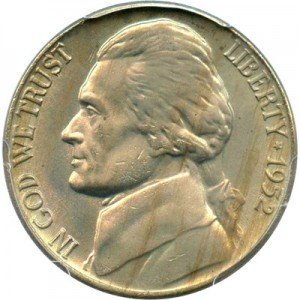

In 1938, the U.S. Mint unveiled a completely new design for the popular five-cent piece. The Jefferson Nickel began production and replaced the Buffalo Nickel. The coin remains quite popular, and the Jefferson Nickel is still widely used and produced by the mint to this day. While you might assume that a nickel has no value to coin collectors, you might be surprised to learn that many of these coins have significant value to collectors.
For a coin collector, however, the condition of the coin is of critical importance. Coins in top physical condition are more pleasing to the eye in addition to being more valuable.
For any coin that has been around over half a century, the coin’s condition is very important when trying to assess the coin’s value. Coins may have some collectable value even in poor condition, although the majority of the time coin collectors look for coins in excellent condition. Finding coins in excellent condition can be challenging, however, as these coins have been around for decades.
When you are looking at a coin, what you are really trying to gauge is how that coin might be graded. Although individuals cannot grade their own coins, you can get a very good idea of how your coin might be graded by a numismatist by looking at the specifications below.
Uncirculated: Coins in uncirculated condition are typically the goal of serious coin collectors. These coins have never been used in circulation, and therefore have not been exposed to the damaging elements of circulation. At a glance, and even close up, these coins will look as if they were freshly minted and have never been handled by human hands.
Extremely Fine: A step below on the grading scale, coins in extremely fine condition may still be coveted by coin collectors. These coins will, however, have some degree of imperfection. The coin must have only very minimal damage, however, to be assigned this grade. In fact, you may not even notice any blemishes unless you perform a very thorough inspection.
Fine: Coins that are assigned a grade of fine have been around the block. These coins have been handled extensively, and show age and use related damage and wear. The coin’s larger features, such as images or text, remain fully intact, however.
Good: Good is the grade assigned to most of the Jefferson Nickels that are exchanged in the market today. These coins may have significant scratches, discoloration or other blemishes. These coins carry smaller premiums due to their condition, and may be shun by collectors for similar coins in superior condition.
There are two key components for estimating a coin’s value. First, you must determine the coin type. Mint year 1952 produced three distinct types of Jefferson Nickel. Secondly, you must assess the coin’s physical condition. Collectors base their purchase decisions on coin condition, and coins in superior condition may sell for far more, and faster, than coins in lesser condition. Use the chart below to get an idea of what you might expect to pay for a 1952 Jefferson Nickel based on the coin’s type and grade.

1952 Jefferson Nickel
| DATE | GOOD | FINE | EXTREMELY FINE | UNCIRCULATED |
|---|---|---|---|---|
| 1952 Jefferson Nickel | N/A | N/A | $1.50 | $3.50 |
| 1952 Jefferson Nickel (D) | N/A | N/A | $5 | $9 |
| 1952 Jefferson Nickel (S) | N/A | N/A | $1.50 | $3.50 | Source: Red Book |